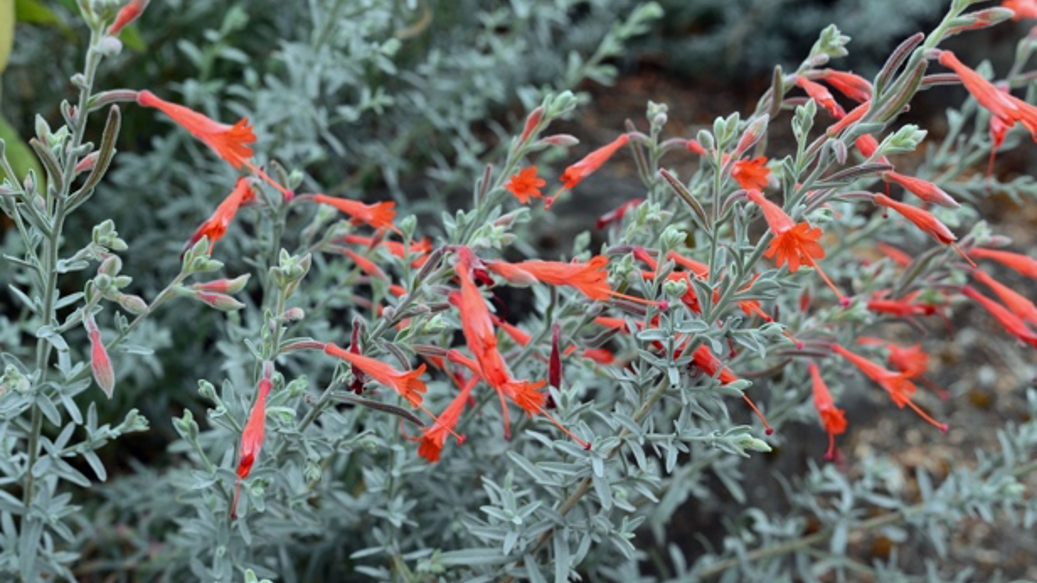OCTOBER Plant Care Checklist
 Fall is the perfect time to plant native plants, like this California fuchsia (Epilobium). Photo: Marie Narlock
Fall is the perfect time to plant native plants, like this California fuchsia (Epilobium). Photo: Marie Narlock
Maintenance and prevention
- Reduce irrigation times significantly as day length shortens and plant growth slows or stops.
- Clean up diseased and damaged plant materials so pathogens don’t overwinter.
- Add garden waste, grass clippings, pruning material, and leaves to compost so long as they are not diseased. Turn compost and keep it as moist as a wrung-out sponge. Cover before rains start to retain moisture; cover during rainy weather to avoid the pile becoming waterlogged.
- Add compost and organic soil amendments but don’t disturb shallow-rooted plants.
- Refresh the spring application of mulch to bring it to two to four inches. (Avoid thicker layer of bark mulch as it may hide smoldering embers in the event of a nearby fire.)
- Clean garden tools. Disease microorganisms may also overwinter on the surface of stakes, tomato cages, trellises, and other garden equipment. Remove all soil from the tools and clean them with a 10% bleach solution or other disinfectant to protect your tools from spreading diseases. Apply a light layer of oil to prevent rusting if you will not be using them for a while. Wash garden gloves.
- Visit nurseries to see trees and shrubs with outstanding fall color; determine if there’s a place in your garden that would benefit from one of these selections.
Planting and propagating
- Plant California natives. This is the perfect time.
- Reseed bare spots in your lawn or install sod. Consider reducing or replacing your lawn to conserve water.
- Plant ornamental grasses, shrubs, perennials, evergreens and groundcovers. Winter rains will help establish sturdy root systems.
Cutting and pruning
- Lightly prune Japanese maples while still in leaf. Select and plant maples; now is the time to see fall color.
- Prune deciduous trees and shrubs that need pruning such as crape myrtle, rose, and Spirea
Pests and weeds
- Visit your garden after dark with a flashlight and handpick snails and slugs. Control measures in fall help reduce populations in spring.
Feed and fertilize
- Feed azaleas, camellias and rhododendrons with an organic fertilizer with no nitrogen.
- Change feeding program for cymbidium. During the fall and winter, use a formula with low nitrogen and higher potassium and phosphorus monthly to promote more and bigger blooms.
Edibles
- Continue with last of summer harvest.
- Plant artichokes, arugula, kale, garlic, shallots, and lettuce.
- Learn more about crops to plant in October and other activities in the edible garden.
Fire-smart Landscaping
-
Choosing the right plant for the right place is part of maintaining healthy plants. Consider drought tolerant, low-growing non-woody shrubs and deep-rooted trees with thick bark, leaves over needles.
-
Learn more about Fire-smart Landscaping.
